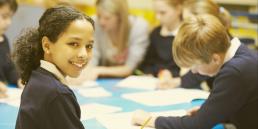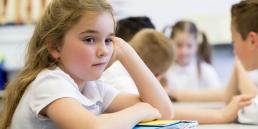Reforms
In 2018 the Department for Education (DfE) proposed changes to the early learning goals (ELGs)and the assessment process within the early years foundation stage (EYFS).
On 31 March 2021, the DfE published the final statutory framework for the EYFS which comes into force from 1 September 2021. The reforms announced
- Reduce the workload for all staff working in the education sector.
- Significantly improve language development for all children but particularly for children from disadvantaged backgrounds.
- Improve outcomes for 5-year-olds.
- Give greater clarity and support of daily practices in early years settings due to revised educational programmes
- Cleary define new age bands (there are now three instead of six) of ‘Birth to 3’, ‘3 and 4- year- olds and ‘children in Reception’.
- Give more emphasis on professional judgement, based on practitioner knowledge and experience.
Early adopters
Schools have chosen to participate and be early adopter schools to pilot the newly published EYFS framework. Findings from these early adopters include:
- Evidence that the revised seven educational programmes provide a clearer summary of the sorts of activities that schools can carry out with children in Reception.
- A more realistic curriculum which is achievable and age appropriate for the groups of children in reception.
- The seven areas of learning remain the same, but most of the aspects have been moved or changed to provide a more holistic ‘best fit’ judgement about a child’s development.
Findings from recent B11 EYFS support sessions
During recent Early Years support to partner schools, we have frequently been asked three key questions. We spoke to our Early Years Consultant, Cassie Blackwood, who provided the following feedback.
What is the difference between Development Matters and Birth to 5 Matters, and which one do I have to use?
Development Matters 2020 provides curriculum guidance to support the implementation of the EYFS, including, ‘The seven key features of effective practice’ and a chart depicting typical child development pathways. These are divided into three age groups: 0-3 years; 3-4 years; and reception. In the three prime areas there are ‘observation checkpoints’ that can be used to assess if children are on track and developing as expected. We have found most schools prefer to use this, based on their feedback. However, the Birth to 5 Matters non-statutory guidance was created by the Early Years Coalition to use as an optional alternative resource to the implementation of the EYFS. The guide is very comprehensive, with detailed information on child development and early years practice, including understanding self-regulation and developing high-quality provision.
Have the seven areas of learning and development changed?
The content in the aspect section within the educational programmes has changed significantly, but the headings remain the same. There is additional importance given to the development of speech and language and literacy skills throughout, especially the acquisition of vocabulary, reflecting the roles these play in improving children’s outcomes, especially those from disadvantaged backgrounds.
Communication and language: The new description states that the development of spoken language underpins all seven areas and the role of high-quality back-and-forth interactions and conversations in a language rich environment is crucial.
Personal, social and emotional development: This now refers to the importance of attachments, within strong, warm, supportive relationships, and the role of self-regulation. Self-care has moved to this area from physical development.
Physical development: This has greater focus on the development of gross and fine motor skills and how physical development is fundamental to children’s all-round health and development, including social and emotional well-being.
Literacy: This reiterates that a lifelong love of reading is vital to children. Reading is broken down into comprehension, which begins from birth, and word reading which comes later. Writing is divided into transcription and composition.
Mathematics: This area focuses on embedding a deep understanding of number to 10, including the patterns and relationships between these numbers and developing spatial reasoning skills. Mathematics should be a fundamental part of the environment l, where children are encouraged to develop a positive attitude to number all around them and not be afraid to make mistakes.
Understanding the world: Emphasises ways in which children can make sense of their physical world and their community, such as by visiting parks, libraries and museums, and meeting important members of society such as police officers, nurses and firefighters. The importance of experiencing a broad selection of books and rhymes to foster the understanding of ‘our culturally, socially, technologically and diverse word’ and associated vocabulary is included.
Expressive arts and design: Promotes the importance of regular opportunities for children to engage with the arts and develop a cultural awareness through creative experiences such as roleplay, art, dance, music and sport.
What are the main changes that we need to prepare for?’
There are very few changes to the safeguarding and welfare requirements. These mostly relate to updated links and dates, including references to legislation, such as the Data Protection Act. However, there is a new requirement to promote good oral health. The main changes are the learning and development requirements, particularly in the education programmes and ELGs.
Consultation
If the above has resonated with you and you feel you and your school or EYFS setting could benefit from an individual consultation and a bespoke support package, please request your free no obligation consultation today.
Supporting information
Early years foundation stage (EYFS) statutory framework



